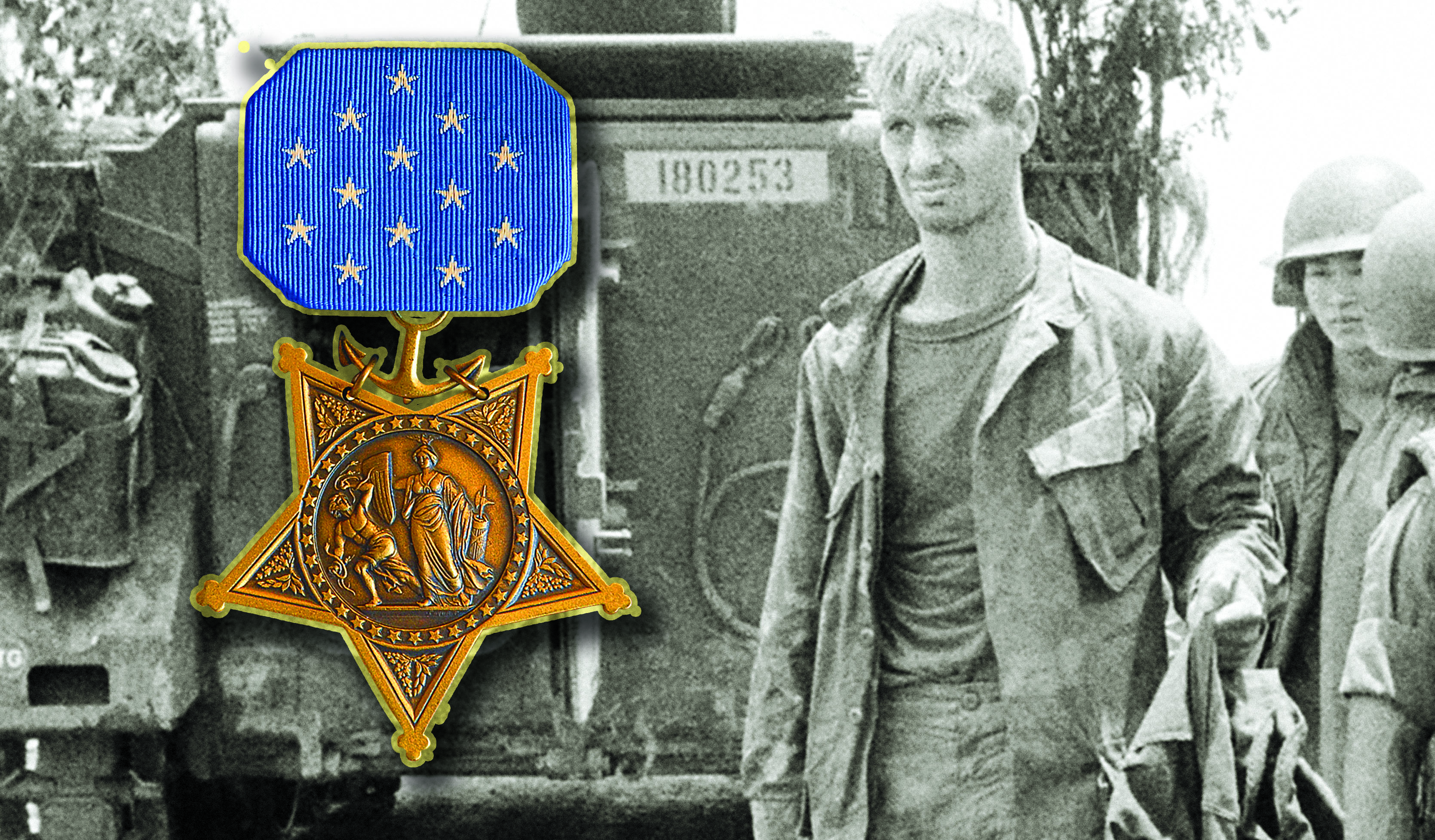On March 30, 1972, 14 North Vietnamese Army divisions crossed the Demilitarized Zone in attacks known as the Easter Offensive. On Sunday, April 2, a U.S. Air Force EB-66 radar-jamming aircraft was shot down in enemy-controlled territory just south of the DMZ, killing five crewmen, while the only survivor, Lt. Col. Iceal B. Hambleton, call sign “Bat 21,” parachuted into an area swarmed by thousands of NVA troops.
A U.S. Army rescue helicopter tried to retrieve Hambleton near the Cam Lo bridge over the Mieu Giang River but was shot down with the loss of its four-man crew. Another chopper was so badly damaged that it had to crash-land after escaping NVA fire. The morning of April 3, Air Force pilots circled above Bat 21’s location to drop mines and keep the enemy surrounding him at bay. Two Air Force search-and-rescue helicopters were damaged and forced to withdraw.
An Air Force OV-10 Bronco spotter plane assisting in the rescue was shot down, but Capt. William Henderson and 1st Lt. Mark Clark parachuted to the ground near the river. Another rescue attempt faltered when three helicopters were damaged and forced to turn back. That night Henderson was captured. He would spend 369 days as a prisoner of war. Over the following week Clark and Hambleton became subjects of the most intense and costly rescue effort of the war.
On April 4, eight fighter planes sustained battle damage, and one was destroyed. Two days later, 52 sorties of fighters and four B-52s bombers pounded the area while a helicopter flew in to attempt a rescue. Enemy fire struck the aircraft, killing all six aboard. On April 7 another Air Force OV-10 was shot down, with both airmen lost. By April 9 it was obvious Hambleton and Clark could not be rescued from the air.
U.S. Navy SEAL Lt. j.g. Thomas R. Norris was assigned to lead a team of five South Vietnamese navy commandos in a ground rescue. Norris had served in Vietnam 1969-70 and returned in March 1971. The native of Jacksonville, Florida, joined the Navy in 1967 after earning a degree in criminology from the University of Maryland. He wanted to be a pilot but washed out due to faulty depth perception and became a SEAL instead.
On the night of April 10, Norris took his team on a search for Clark. They planned to swim upriver to rendezvous with the airman, but the current was too swift. So Norris led his team to shore, moving past columns of NVA tanks and patrols. Clark was advised by radio to get in the river and float down to meet them. In the darkness, Clark floated past the team. An enemy patrol forced Norris’ men to briefly take cover before slipping into the river and floating down it until Norris found Clark hiding along the bank. Norris then led his team and Clark to safety.
Next up: the rescue of Hambleton. On April 13 Norris and a member of his South Vietnamese team, Petty Officer 3rd Class Nguyen Van Kiet, engaged in the most daring effort yet. The two men went upriver to a bombed-out village and found a sampan. In darkness they paddled to the Cam Lo bridge, then turned back while searching for Hambleton.
When the sailors found the 53-year-old airman they hid him in the bottom of the sampan and moved downriver hoping they looked like fishermen. But they came under NVA fire from the bank and pulled to shore to call for air support. With smoke cover and friendly fire, the men returned to the river and finally reached a safe position, carrying Hambleton, who could no longer walk.
A few months later, Norris was nearly killed. He was shot in the head during an Oct. 31 mission to gather intelligence not far from his prior mission, and only the heroic actions of a fellow SEAL, Petty Officer 2nd Class Michael E. Thornton, saved his life. Thornton was awarded the Medal of Honor in 1973. After three years of hospitalization, Norris was awarded the Medal of Honor on March 6, 1976. Also in 1976, Kiet was awarded the U.S. Navy Cross for his heroics.





